1lumen selects and reviews products personally. We may earn affiliate commissions through our links, which help support our testing.
Vezerlezer ED10 Review
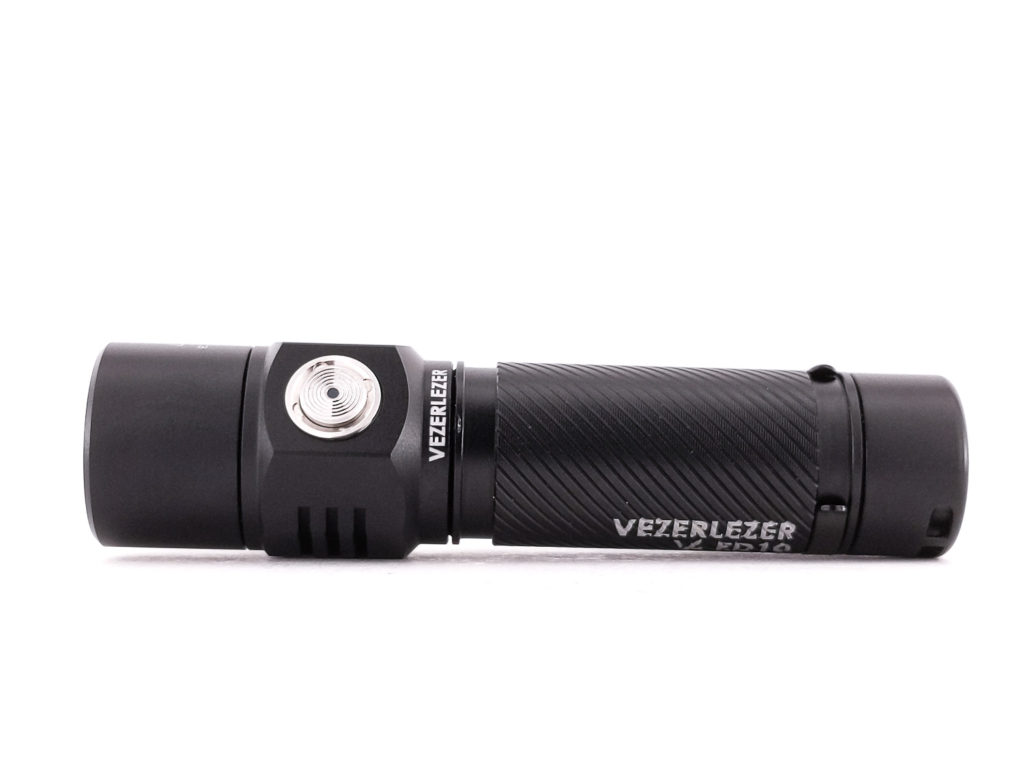
Vezerlezer ED10 specifications
| Brand/model | Vezerlezer ED10 |
|---|---|
| Category | EDC flashlight |
| LED | Luminus SST40 |
| Max. Lumens | 2,200 lm |
| Max. Beam intensity / distance | 23,256 cd |
| Battery config. | 1*18650 |
| Onboard charging | USB-C |
| Modes | 6 |
| Blinkies | Strobe, SOS |
| Reflector | OP |
| Waterproof | IP68 |
| Review date | February 2022 |
Introduction:
Vezerlezer is a brand new company in the flashlight world, and ED10 is their first model. Typically I associated “new flashlight company” with “flashlight company that doesn’t know how to make a good flashlight”, but when I looked at the ED10 product page, I was pleasantly surprised. It looked like Vezerlezer had made a pretty compelling little EDC light, and I was excited to give it a try.
Package quality.
ED10 comes in a nice retail box with attractive graphics and plenty of info about the light. Inside is a typical, thin, molded plastic insert that does an adequate job of holding the light in place. The following items are included in the box:
- Vezerlezer ED10
- Battery
- Spare o-ring
- Lanyard
- User manual
- USB A-to-C charging cable
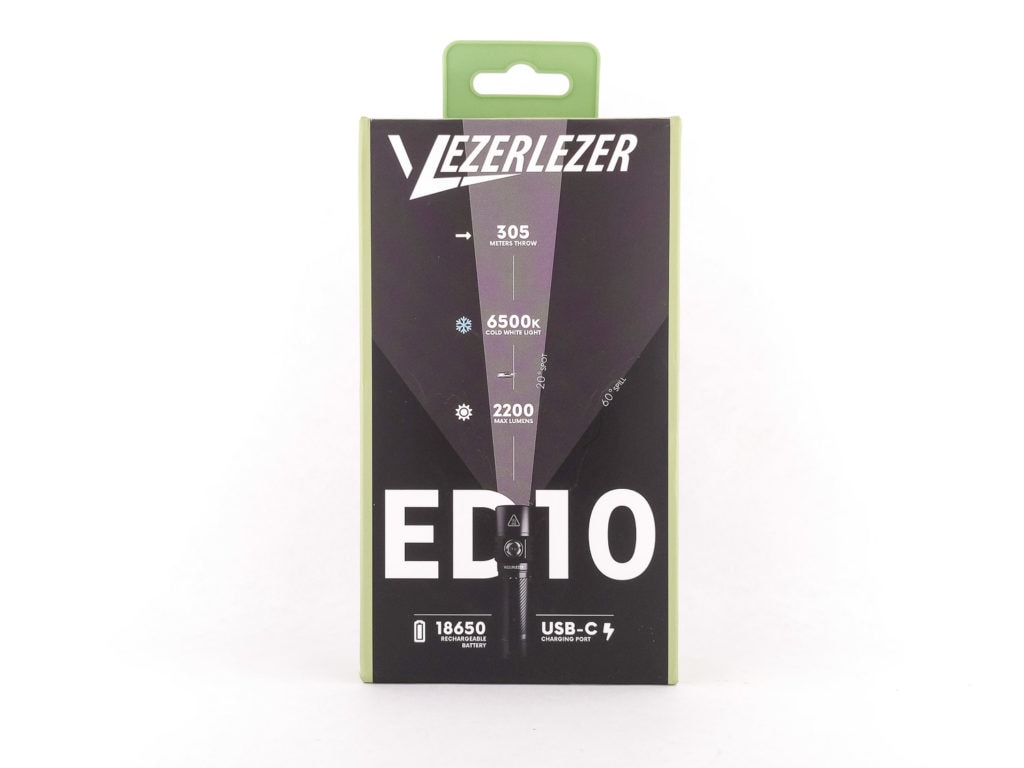
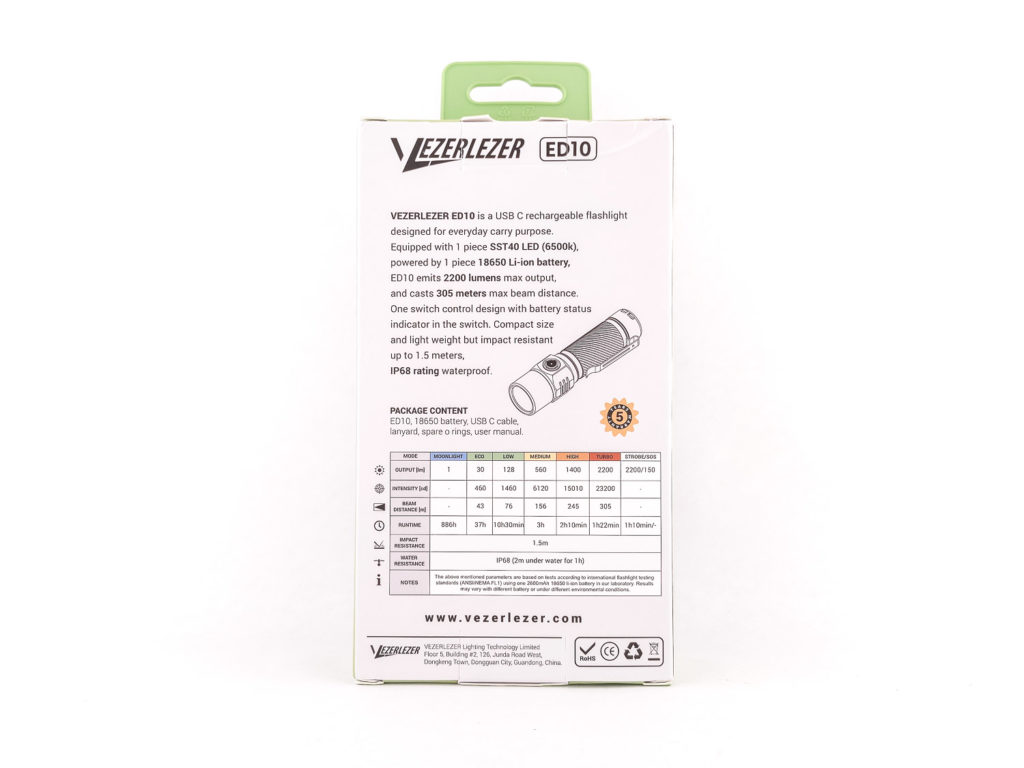
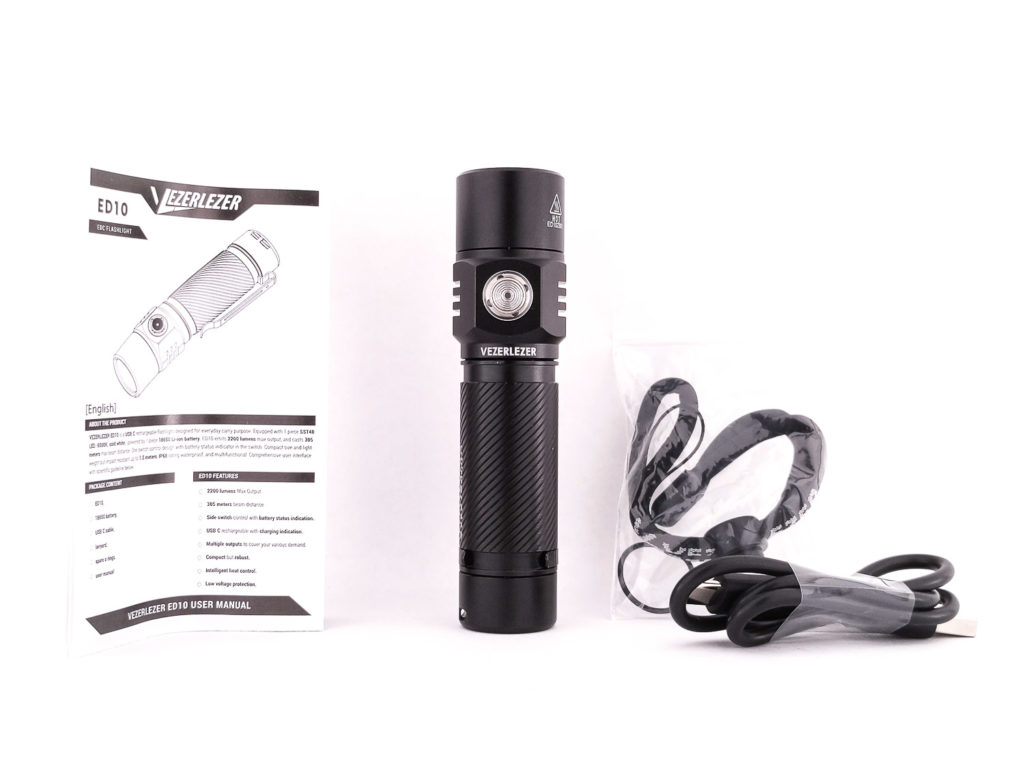
Flashlight in use
ED10 has a reasonably attractive design, particularly the unique helical texture on the body tube. The head has some large flat spots which prevent the light from rolling away on a table. As far as I can tell, nothing except the driver is glued. Hooray! I do find the branding a bit much, with the name “Vezerlezer” printed on the light in three separate places (one being a URL). A simple “Vezerlezer ED10” printed on the head under the button would have been more tasteful.
Ergonomically, it’s fine. There are no hotspots and it’s comfortable to use. The spiral texture on the body is not the grippiest, so it might slip if your hands are wet. A forward grip or pencil grip works great and my finger lands right on the button in either grip.
Speaking of the button, ED10 uses a metal, backlit, electronic, side switch. It’s pretty good, with an audible click and plenty of tactility. The metal boot is a little wobbly but not too bad. It’s also plenty easy to find in the dark. Right in the middle of the switch is a transparent section that allows backlighting through to indicate battery status. When unplugged, green means 75-100%, orange means 50-75%, red means 25-50%, and blinking red means 0-25%.
The light carries fine in the pocket. When fully seated, it’s a nice deep carry but is still easy enough to retrieve from the pocket. The clip has enough ramp that it’s easy to slide over pants material and the clip is stiff enough to hold the light securely. I did find that occasionally when pocketing the light, my pants material would catch prematurely on the little protrusion of the clip near the body, instead of seating all the way into the looped over deep carry part of the clip. Not a big deal, but it’s something Vezerlezer can fix on the next iteration.
The clip is reversible, but the body tube itself is not. The lanyard loop in the tailcap is cut in such a way that it doesn’t create an ergonomic hotspot nor inhibit tailstanding. There is no magnet in the tailcap, nor any room to add one. That would have been a nice inclusion.
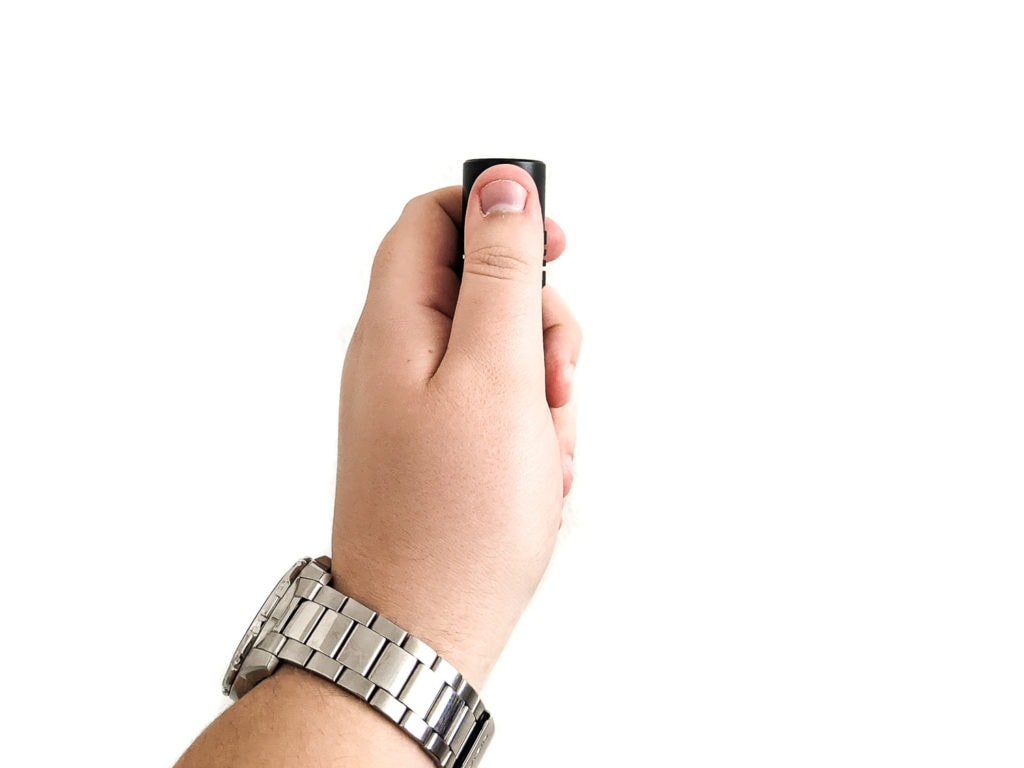
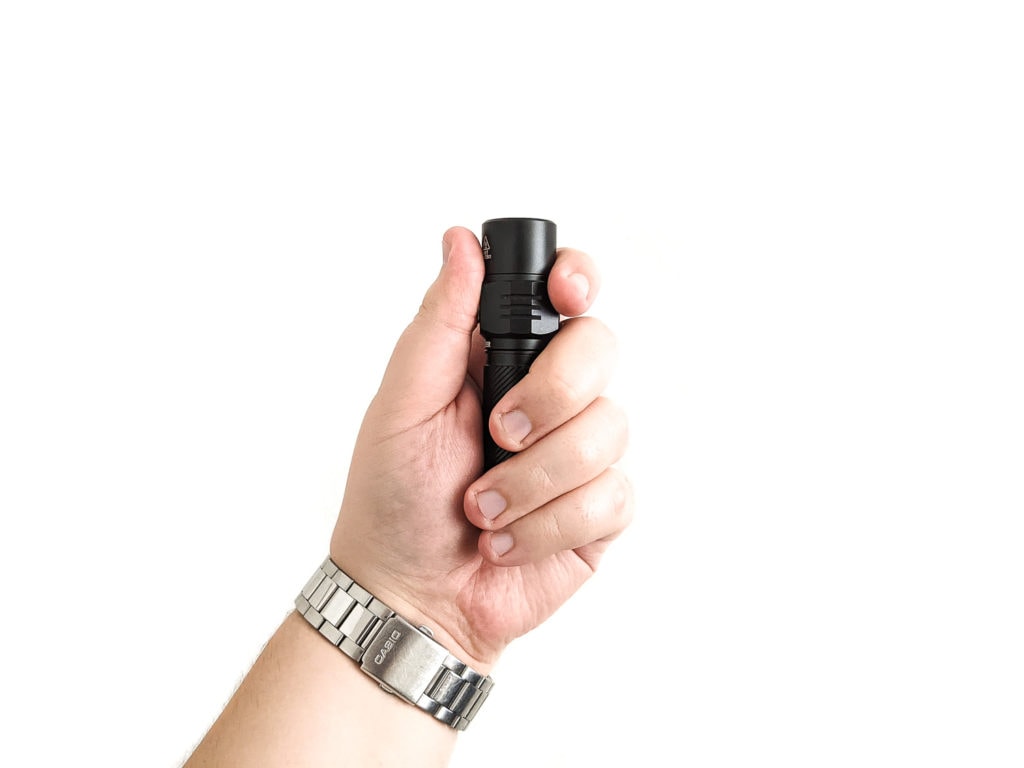
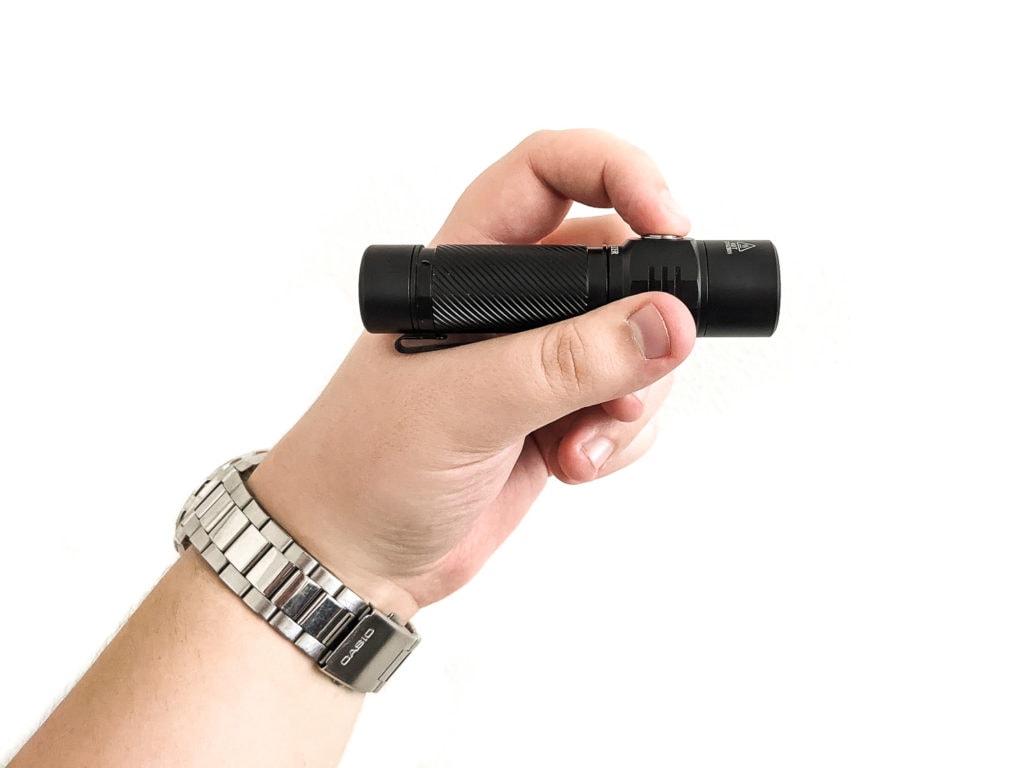
Build Quality, and Warranty
Build quality is fairly good, and appropriate for this price point. There are no sharp edges nor any blemishes in the anodizing. The threads are anodized, trapezoid cut, smooth, and appropriately lubricated. They’re not too fine nor too long. Battery swaps are fairly easy from the head, but the tailcap can be a little slippery. The spiral milling on the body tube looks great but it really doesn’t add much grip. There are high-quality plated springs on both the tailcap and the driver. The bezel can be removed, but the “HOT” logo on it never aligns with the button which might bother some users, and the anodizing is smooth and shiny.
Warranty: Below is copied straight from the manual.
30 days money back / replacement guarantee: Within 30 days from the date of purchase, customers can request full refund or free replacement, if the product has quality problems.
1 year warranty: Within 1 year from the date of purchase, you will get free repair if the product has quality problems.
Battery warranty: We offer 1-year warranty for the rechargeable batteries but not any other included accessories.
5 Years product warranty: Within 5 years from the date of purchase, we will offer free repair for registered customers, if the product has quality problems.
Lifetime maintenance: from the date of purchase, if the product has a problem after 5 years, we will offer paid repair for registered customers.
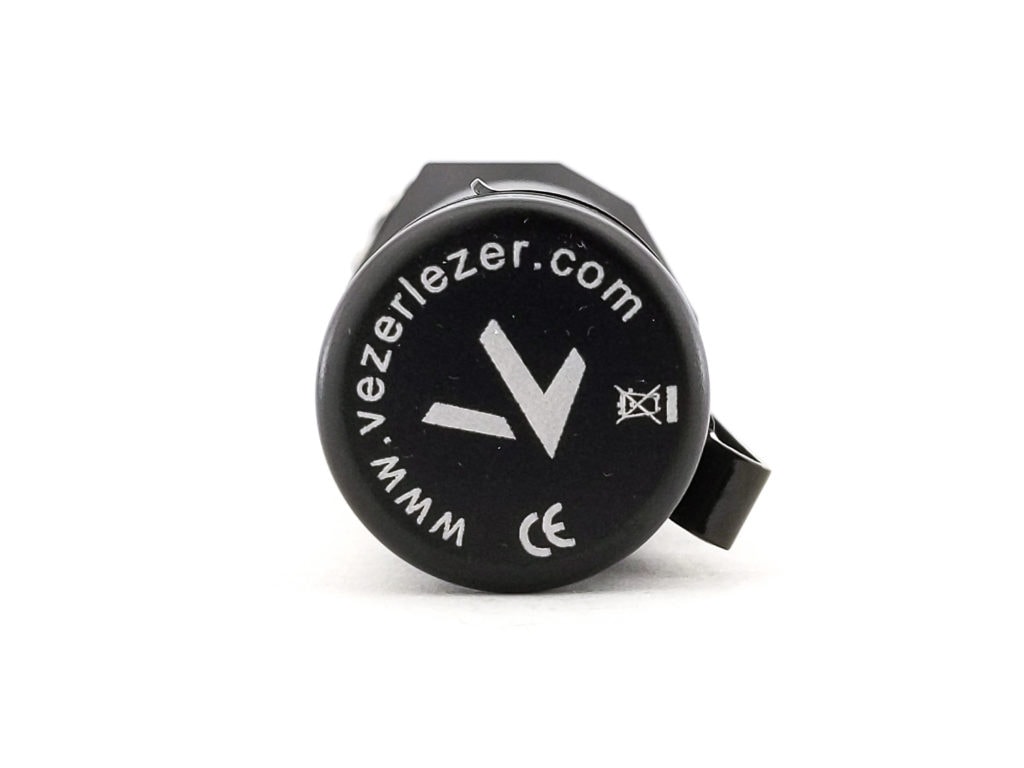
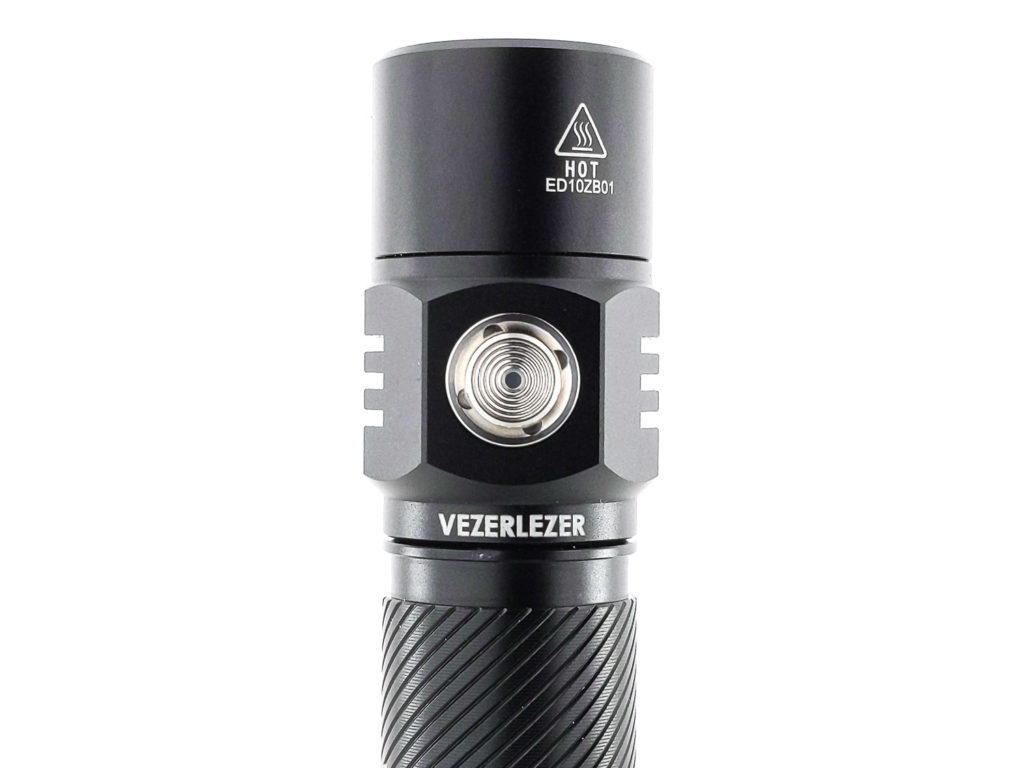
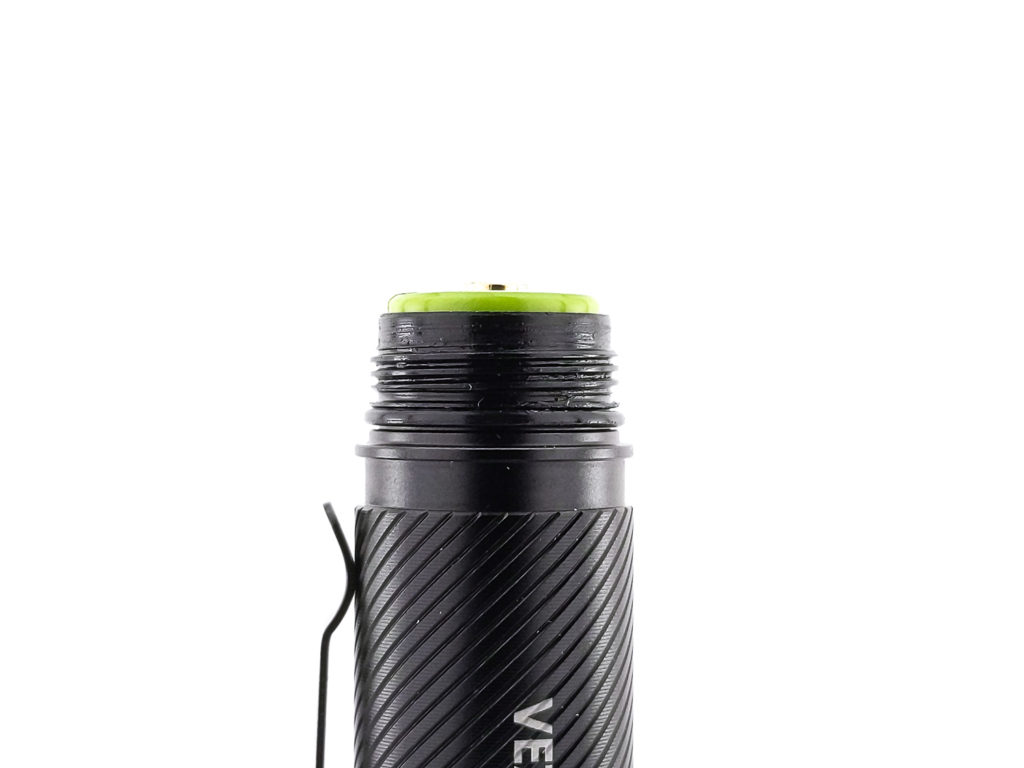
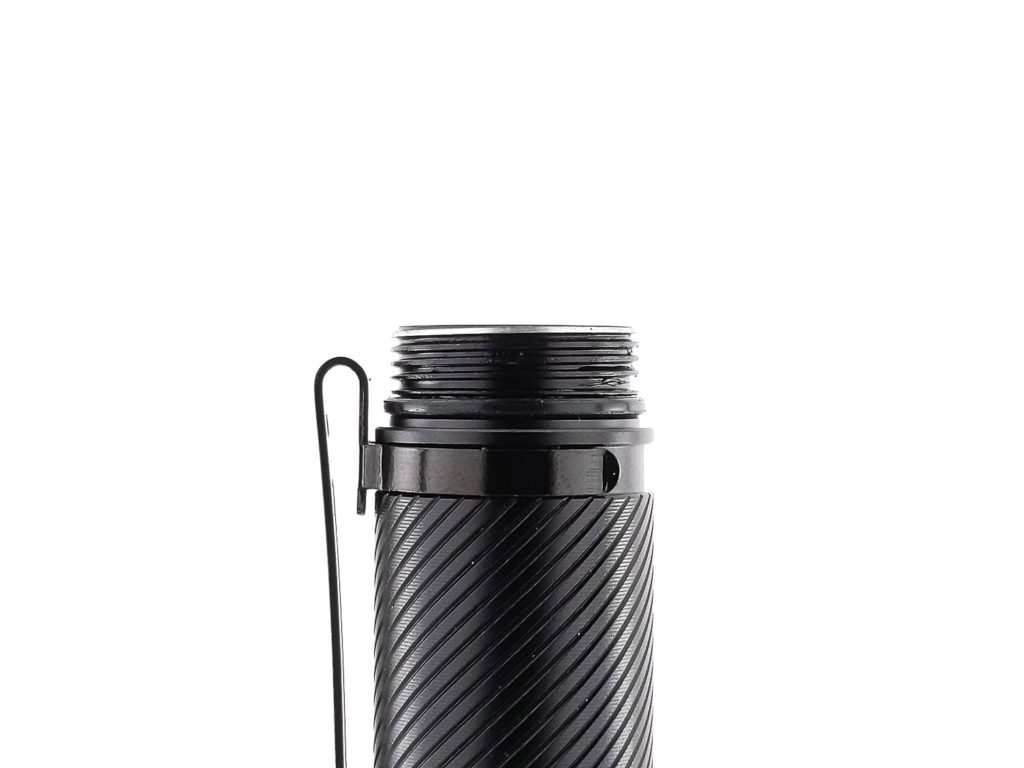
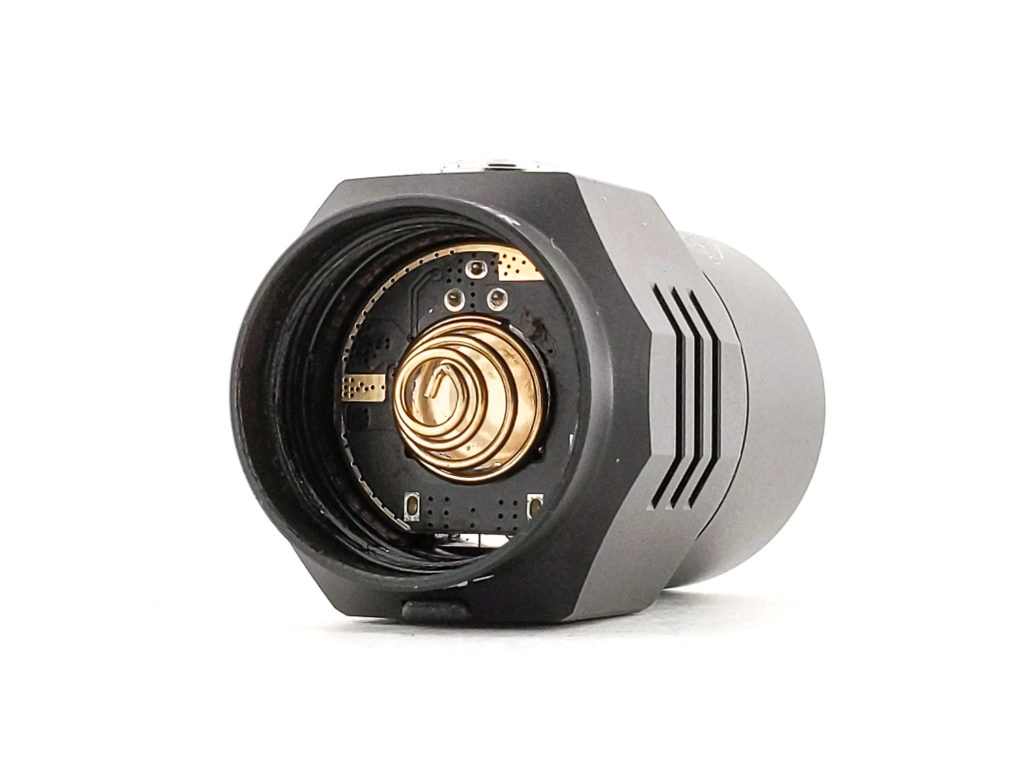
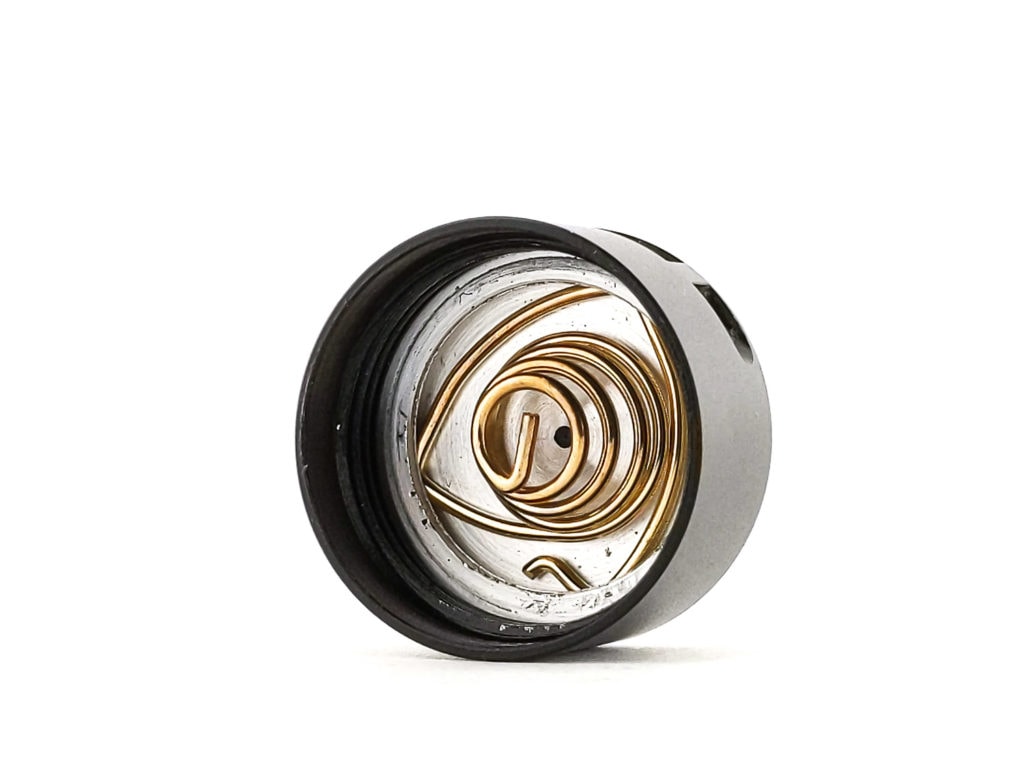
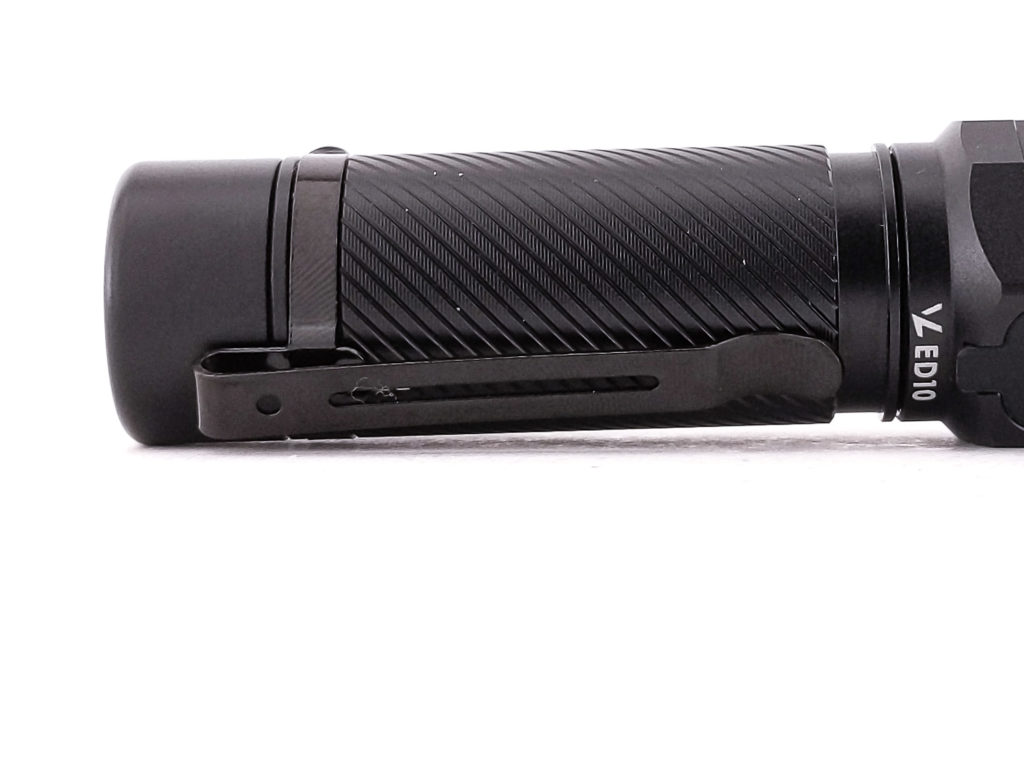
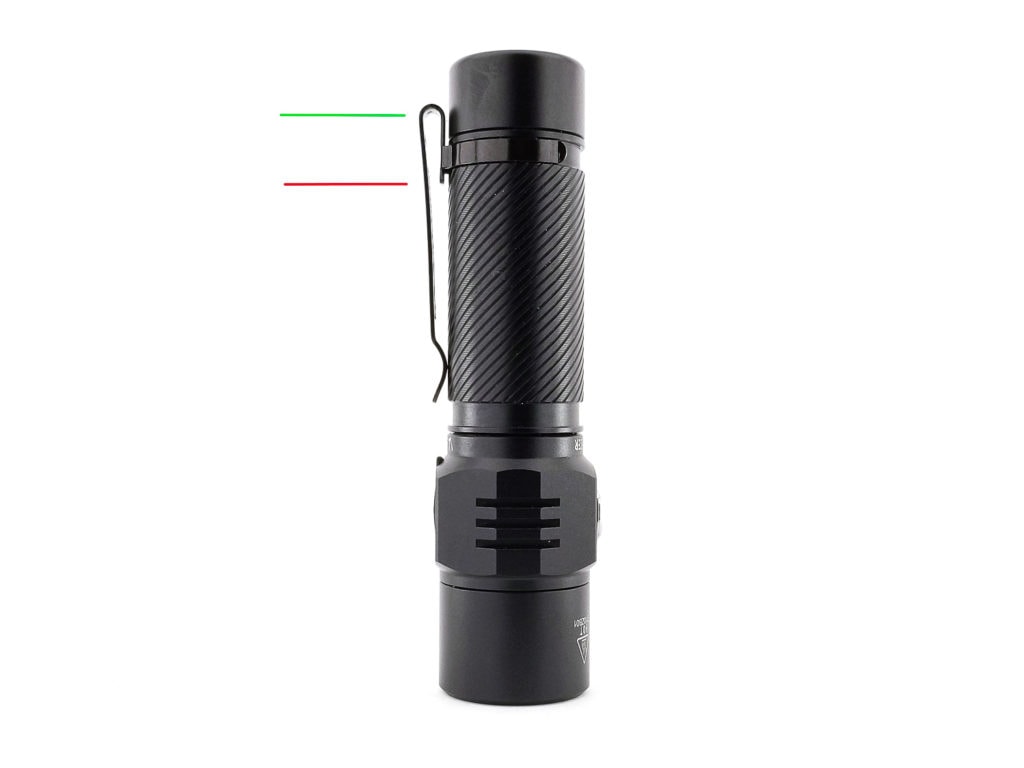
LED, Lens, Bezel, Beam, and Reflector
ED10 uses the popular Luminus SST40. It’s a domed emitter that’s popular because of its efficiency and brightness, not for its lackluster color properties. It sits at the bottom of an orange peel reflector which threads in. I’ve never seen a design where the reflector threads into the head from the front before, so that’s neat. The centering gasket is also interesting, as it’s concave and the mating surface of the reflector is convex. This means they will always align perfectly even if they aren’t sized exactly. Clever! The bezel can be easily removed. It’s worth noting that the flat shelf the MCPCB sits on appears to be anodized, which is unusual.
The beam is very cool. There’s a lot of tint-shift, so the hotspot is significantly warmer and greener than the spill as you can see in the white wall beamshot. Fortunately, there are no strange artifacts, thanks to the orange-peel reflector. Outdoors, you don’t notice the cool/green tint nearly as much.
I did some testing of each mode in the center of the hotspot with an Opple Light Master III. I got a color temperature range of 5400K to 7500K, with higher modes being cooler and lower modes being less cool. I got an Ra (CRI) range of 52 to 67. DUV/tint is on the greener side with a range of .0052 to 0.0269.

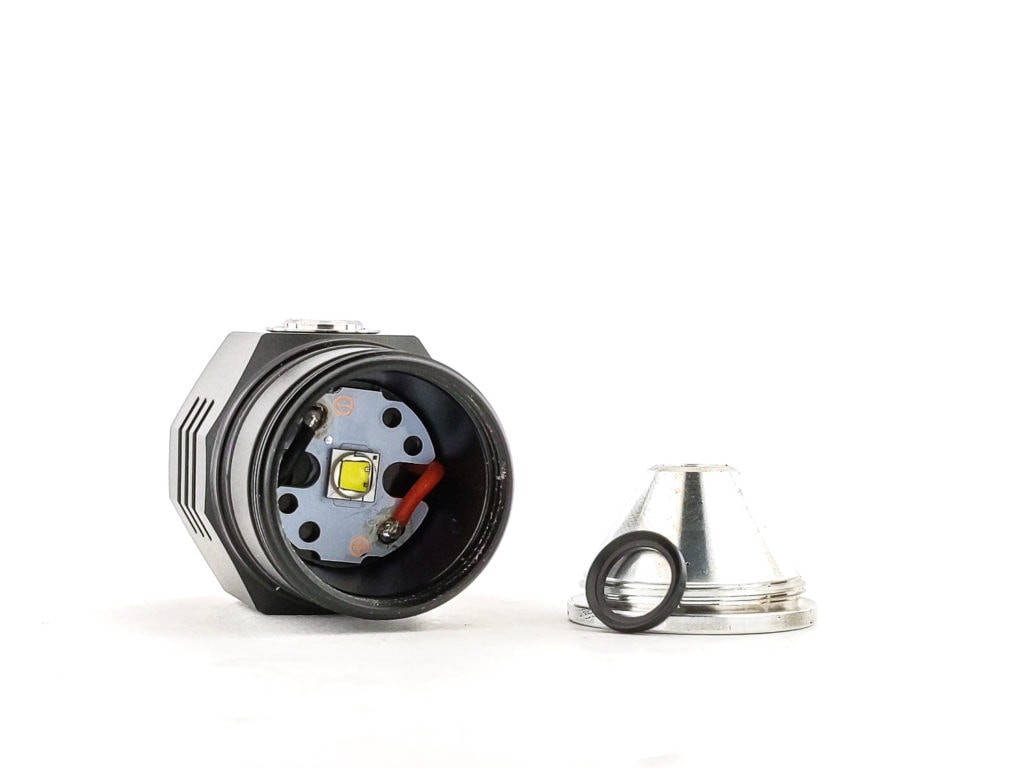
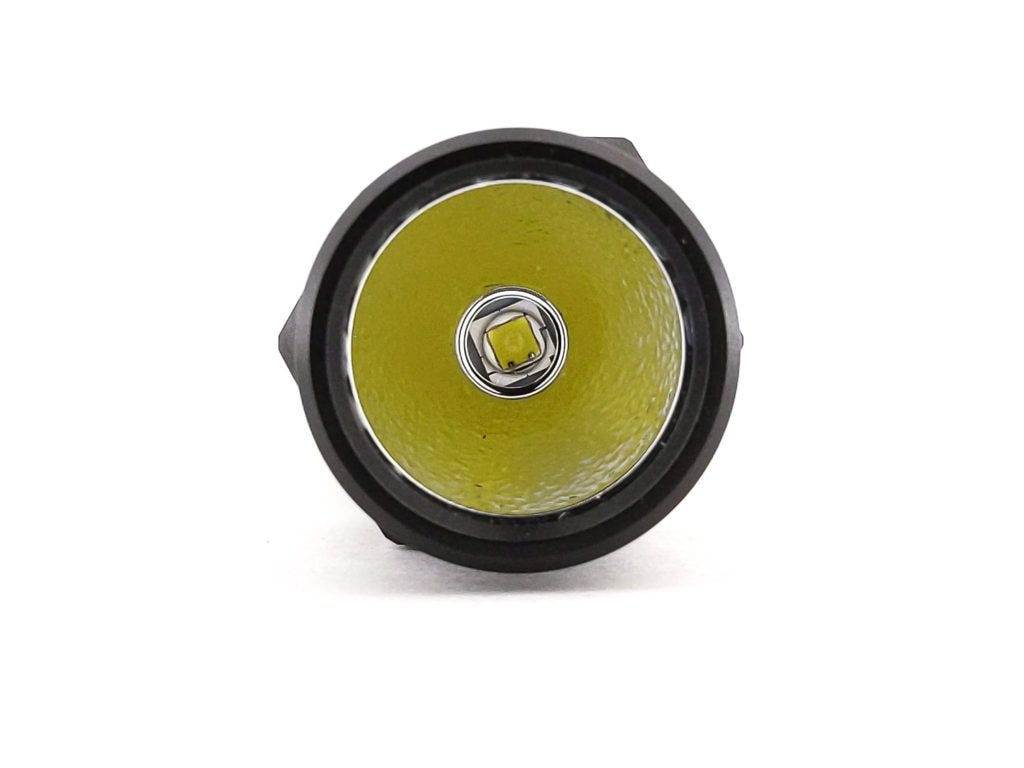
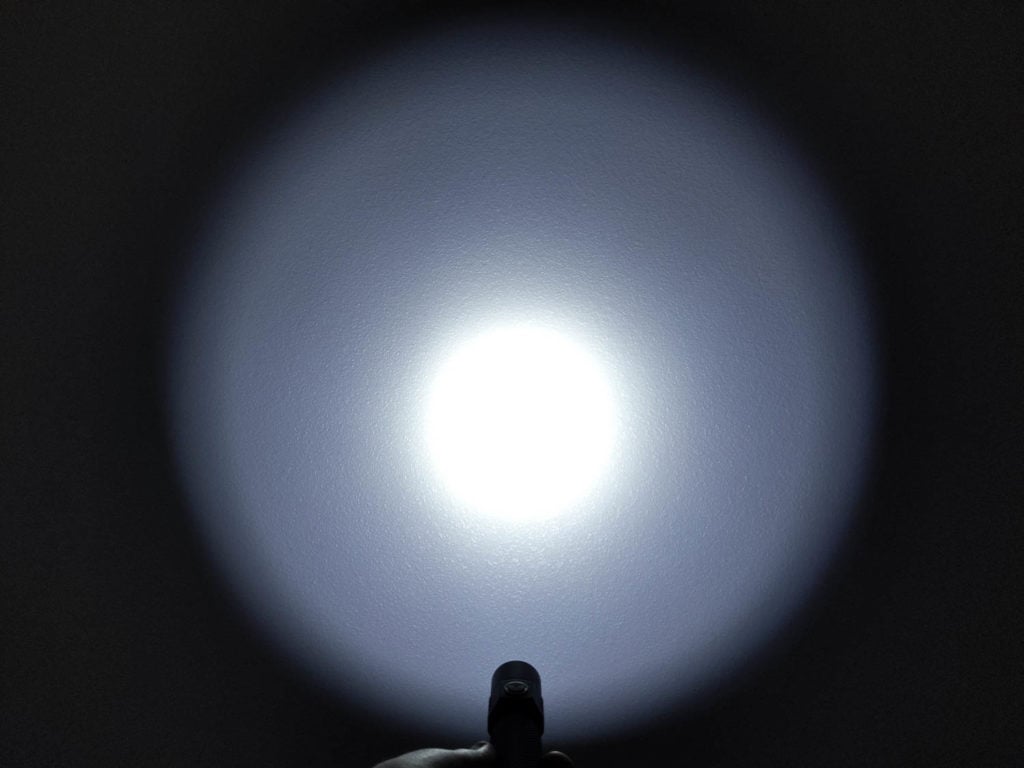
Dimensions and size comparison
Length:
- Length: 11.2 cm / 4.41 inches
- Bezel diameter: 2.7 cm / 1.06 inches
- Head diameter: 3.2 cm / 1.26 inches
- Body diameter: 2.5 cm / 0.98 inches
Weight:
- Without cells: 78 grams / 2.8 oz.
- With cells: 130 grams / 4.6 oz.
EDC size comparison with its competition
Compared to the other EDC-ish size 18650 lights I own, from left to right: Noctigon KR1, Skilhunt H04 RC, Vezerlezer ED10, Emisar D4V2, Convoy M1
Compared to a few other miscellaneous lights, from left to right: Convoy S12, Fireflies E07 2021, Vezerlezer ED10, Fireflies E07x Pro, Kdlitker E6
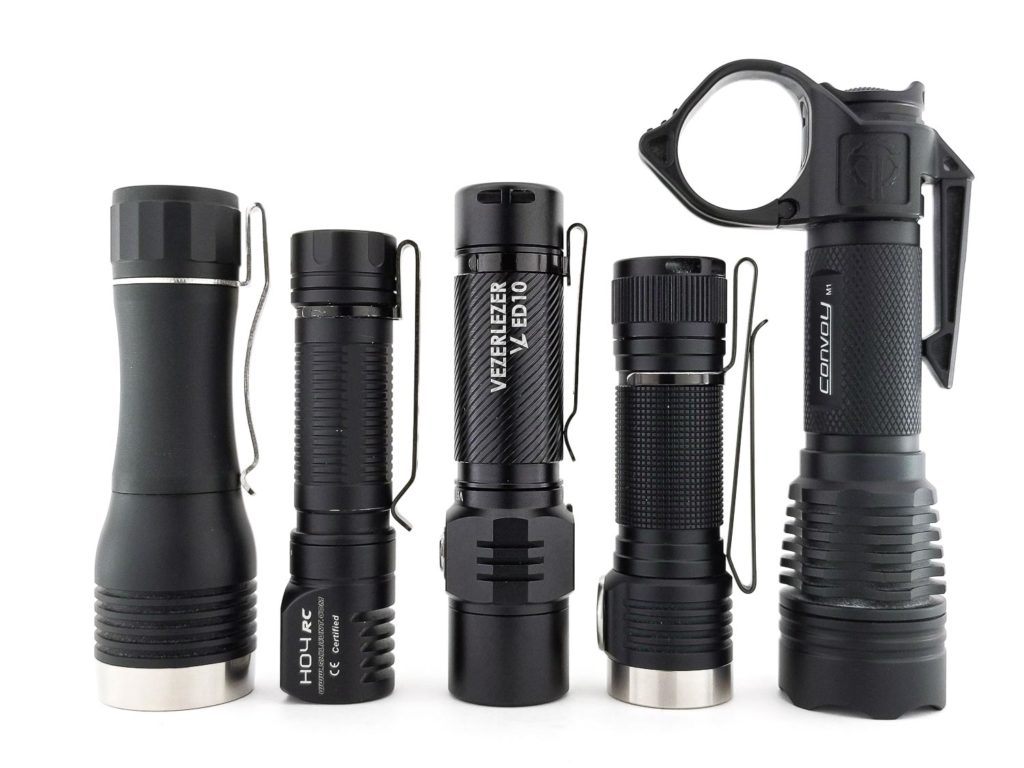
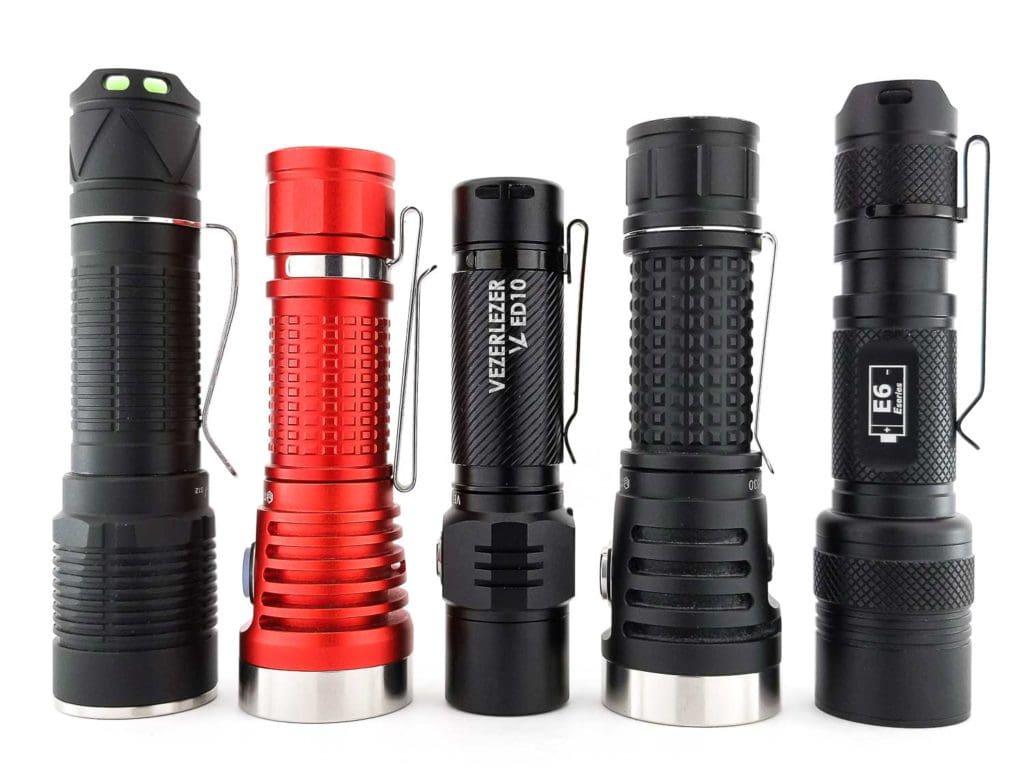
Driver & User Interface:
Available modes: Moonlight, Eco, Low, Medium, High,Turbo
From OFF:
- Press and Hold (<5 seconds): Moonlight (if using stepped ramp) or Eco (if using smooth ramp)
- Press and Hold (>5 seconds): Switch between stepped and smooth ramp
- Single click: On (to memorized mode)
- Double click: Turbo
- 3 clicks: Strobe
- 4 clicks: SOS
- 5 clicks: Lockout
From ON:
- Press and Hold: Increase brightness
- Press and Hold, release, then Press and Hold again: Decrease brightness
- 1 click: Off
- Double click: Turbo
- 3 clicks: Strobe
- 4 clicks: SOS
- 5 clicks: Lockout
Mode memory:
- Yes, except Turbo, Strobe, and SOS
Shortcuts:
- To Moonlight or Eco: Press and hold from off
- To Turbo: Double click from anywhere (except lockout)
- To Strobe: Triple click from anywhere (except lockout)
- To SOS: 4 clicks from anywhere (except lockout)
- To Lockout: 5 clicks from anywhere
Low voltage warning:
- The switch will blink red as a warning when the battery is low, and the light will eventually shut itself off completely. There’s no low voltage warning from the main emitter, though, just on the switch.
Strobe/blinkies
- Strobe (3 clicks), SOS (4 clicks)
Lock-out mode:
- Enter/Exit lockout by clicking 5x
PWM
- There is no visible PWM. My Opple Light Master III was able to detect PWM on most of the modes. PWM makes sense considering this is a FET+1 driver, but the Opple said it’s at 31,665hz which seems suspiciously fast to me. So, take that with a grain of salt.
Additional info on the UI:
- ED10 uses a “mos+7135” driver (FET+1). This is a common driver design on inexpensive lights, as it allows for decent efficiency and (ostensibly) good regulation on low modes while also offering very high current at high brightness. The downside is that higher modes are fairly inefficient so the light will heat up faster, step down harder, and use more battery on higher modes compared to more sophisticated driver designs.
- Regulation is… weird. As you can see in the regulation graph, it seems that all the modes except Low (and including moonlight) are affected by battery voltage. The higher levels being affected makes sense as this is a FET+1 driver, but theoretically all the lower modes should be well regulated by the 7135 chip. This was particularly noticeable to me when changing modes on a near-dead battery. Low mode and Medium mode were virtually indistinguishable from each other.
The strangest bit is that moonlight is highly affected by cell voltage! With a near-dead cell, moonlight was so dim I could hardly see the emitter lighting up unless I was in near pitch black darkness. Yet, I could easily jump up to Eco mode which was still producing over 15 lumens! I’ve never seen that behavior before. It’s not really a problem, but it’s inexplicable.
Batteries & Charging
Vezerlezer includes a protected, button top, 2600mah, 18650 battery with ED10. It’s an adequate cell, but the capacity is a bit low for this price point. I also tried an unprotected flat top cell and it worked just fine. There are beefy, gold-plated springs on both the driver and in the tailcap so battery compatibility should not be a problem.
There’s a USB-C charging port directly opposite the switch, covered by a rubber flap port cover. The USB port cover works fine and seals well. There’s a little tab to help you open it, but you have to grab and pull on the tab to get it open. Something accidentally brushing against the tab is not enough to open the port. Most new manufacturers tend to do a poor job with the port cover, but Vezerlezer has done well here. It’s worth noting that while you can technically rotate the port cover out of the way, it puts a lot of strain on it which makes me concerned about long-term tearing. No extra covers are included, so I would just lift the flap for charging rather than rotating it.
When charging, the transparent portion of the switch will light up. Blinking red means charging and green means fully charged. Charging worked fine on my sample with A-to-C cables and C-to-C cables.
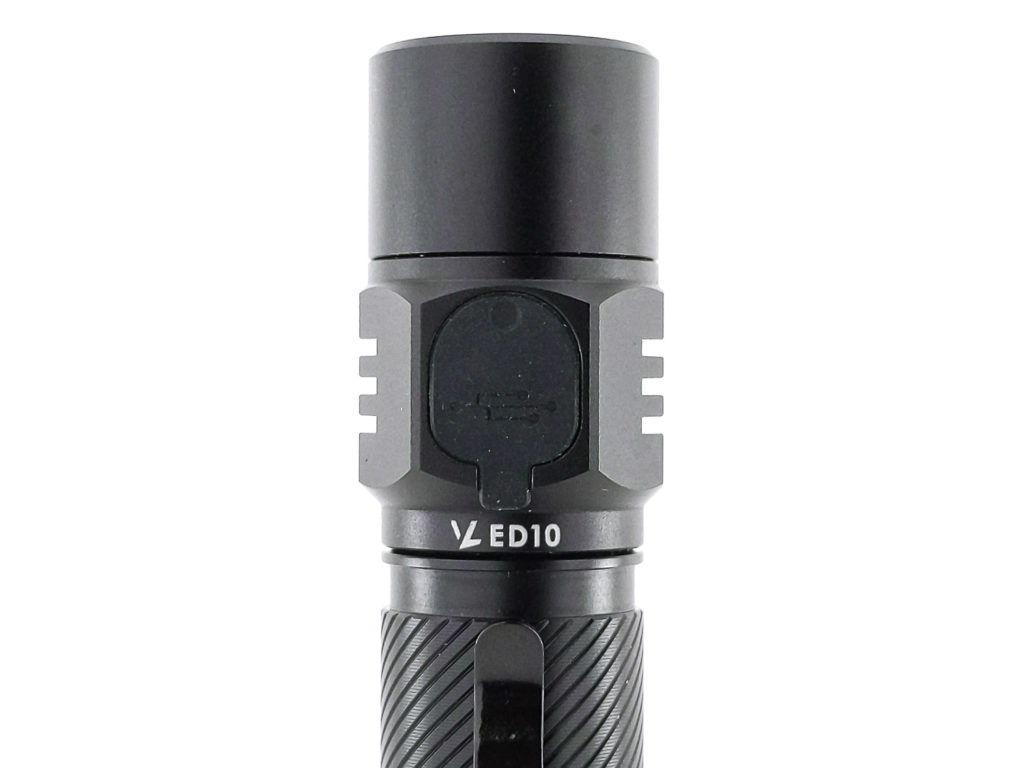
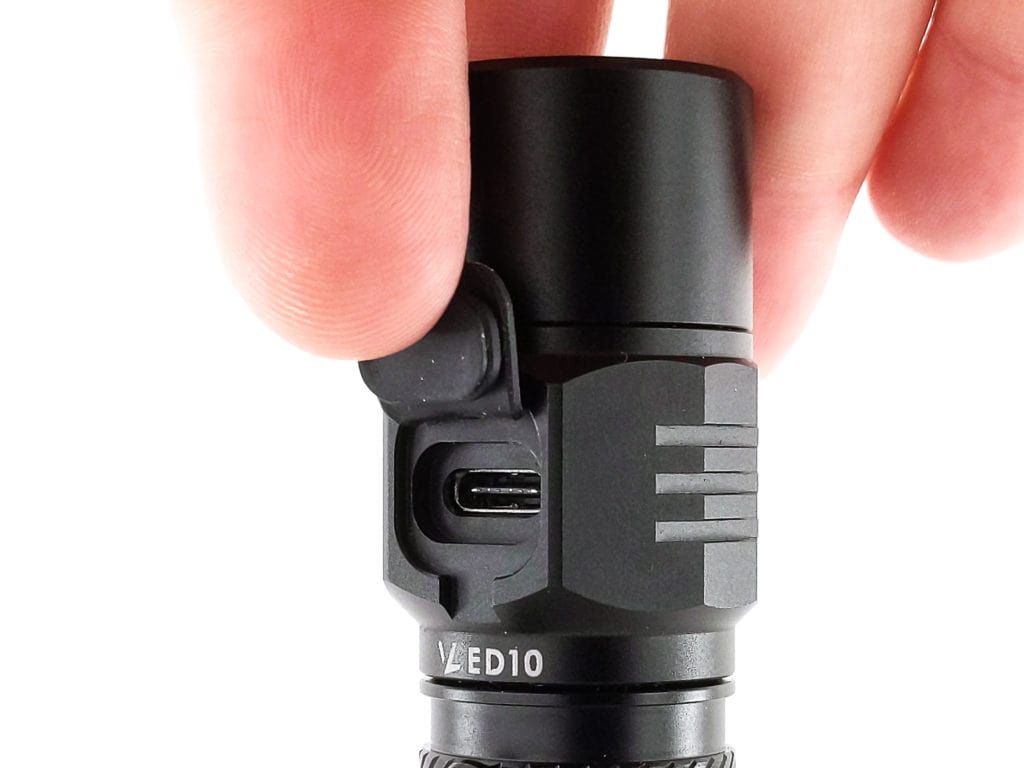
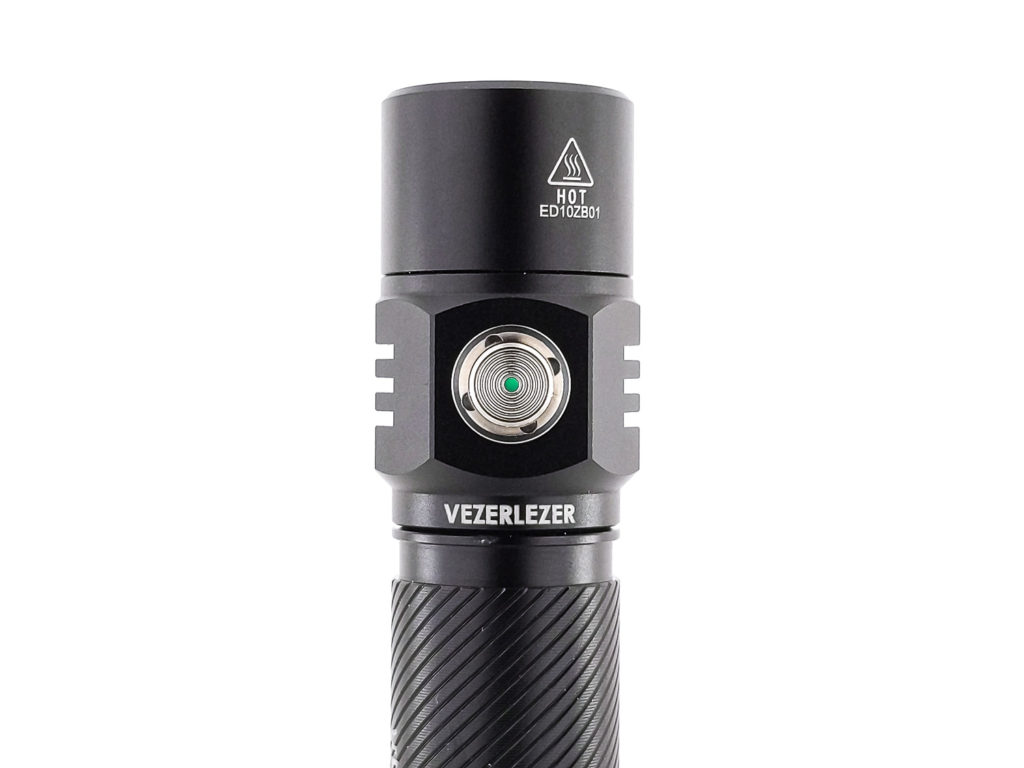
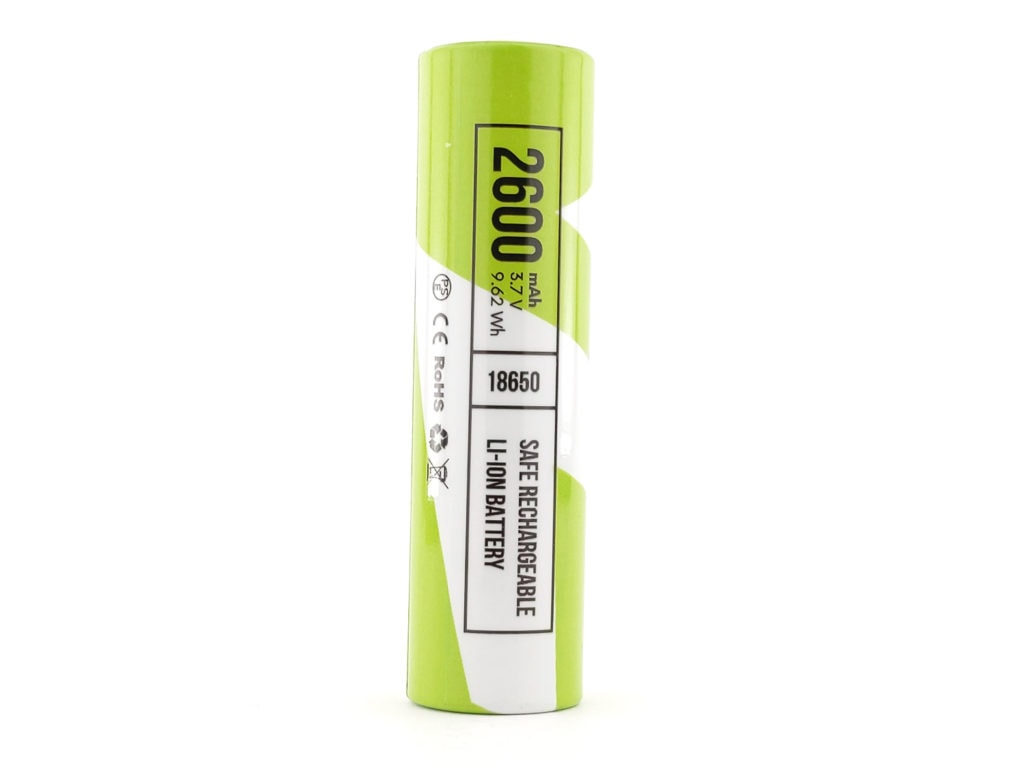
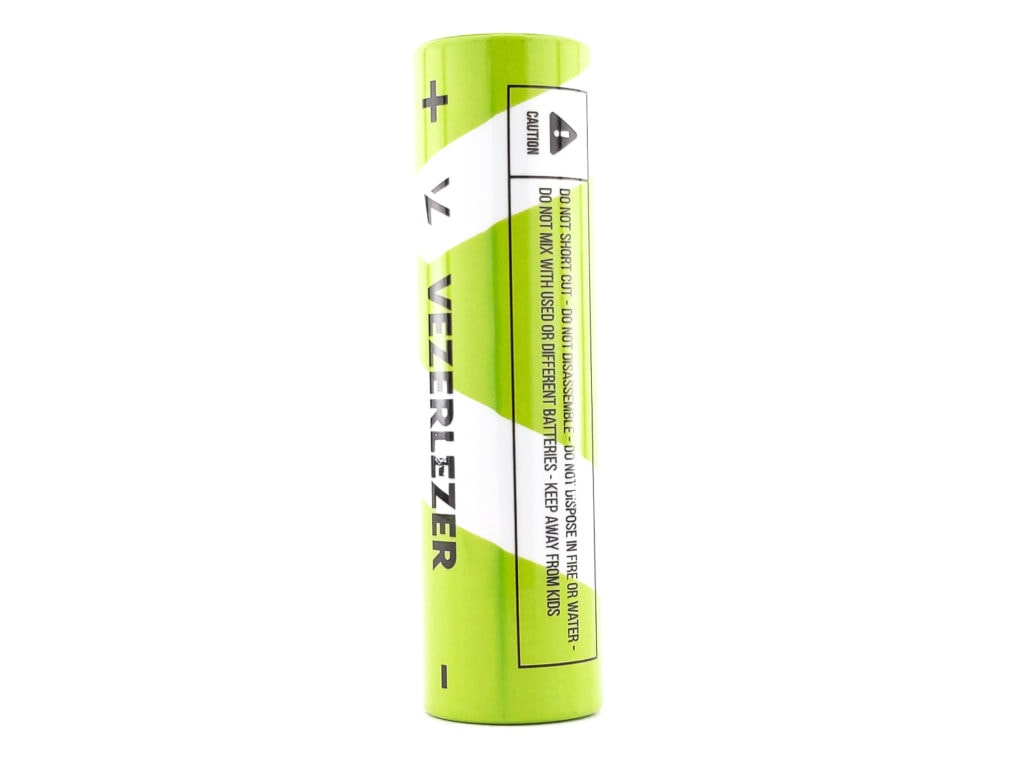
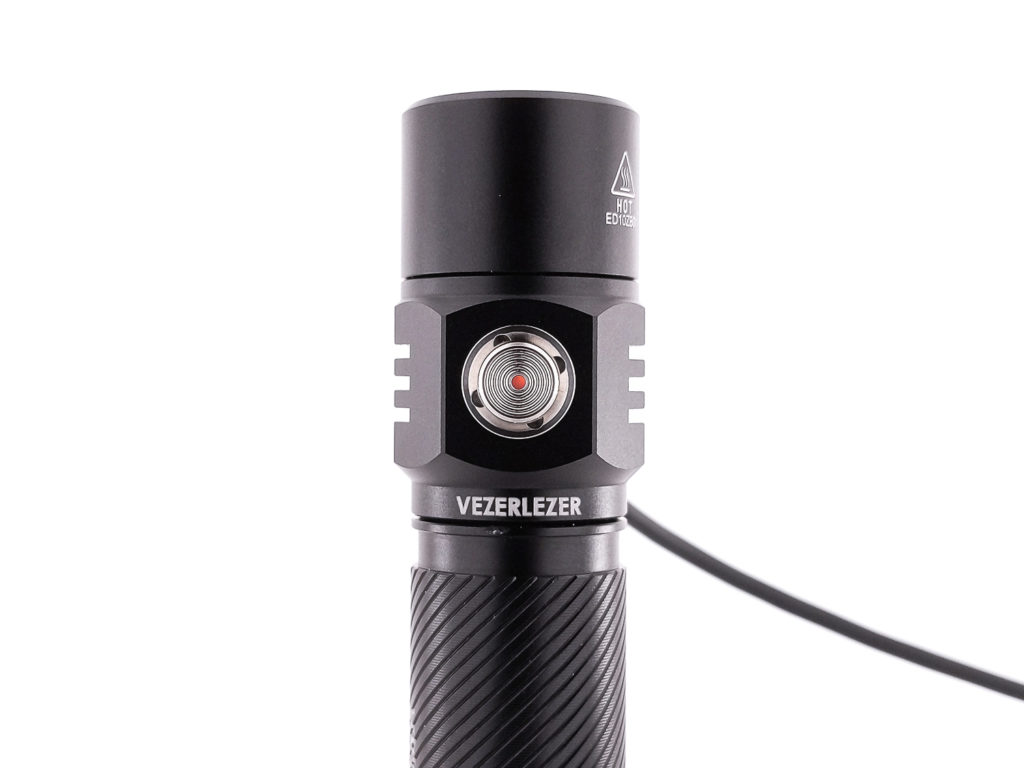
Performance
Lumen measurements (for each mode)
Lumen measurements were taken on a Texas Ace 3.5″ Lumen Tube. A candela measurement was taken at 10 meters with an Opple Light Master III on the highest brightness, and other candela figures were calculated relative to that. Runtime tests were performed with the Ceilingbounce app on my smartphone and adjusted against the lumen measurements. All of these tests were performed with a fully charged included battery unless otherwise specified. I cannot measure moonlight directly, so moonlight readings are calculated based on the brightness relative to the next-lowest mode.
| Mode | Specs | turn on | 30 sec | 10 minutes |
|---|---|---|---|---|
| Moon | 1 | 0.5 lm | 0.5 lm | N/A |
| Eco | 30 | 24 lm | 24 lm | N/A |
| Low | 128 | 106 lm | 106 lm | 106 lm |
| Med | 560 | 555 lm | 543 lm | 488 lm |
| High | 1,400 | 1,270 lm | 1,217 lm | 537 lm |
| Turbo | 2,200 | 1,980 lm | 1,823 lm | 534 lm |
Parasitic drain:
- 2.8mA: That parasitic drain is problematically high. It’s not necessarily a deal-breaker if you use mechanical lockout when the light’s not in use, but Vezerlezer really needs to address that. It should be a few dozen microamps, not a few milliamps.
Runtime graph
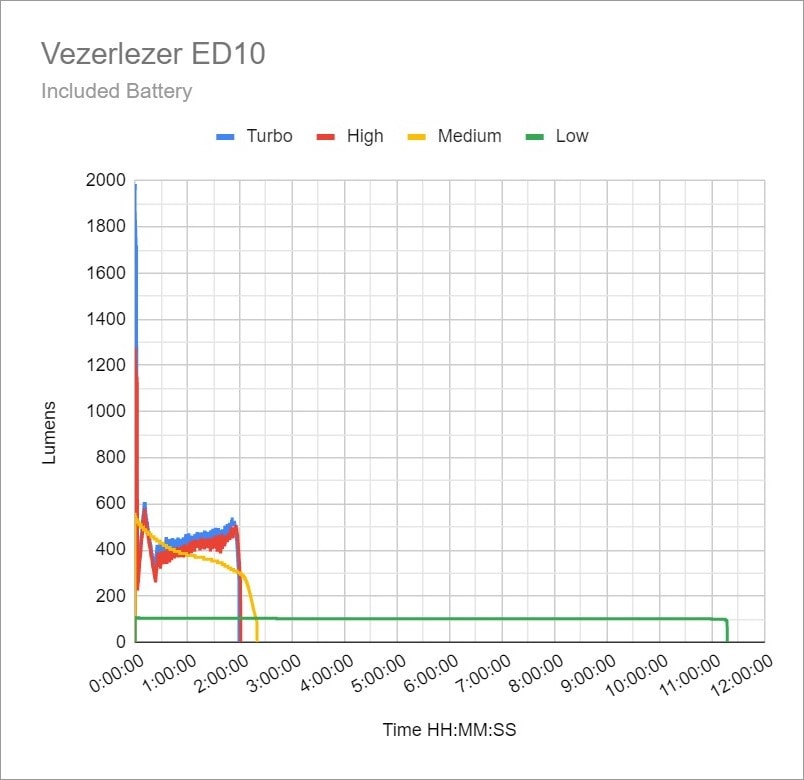
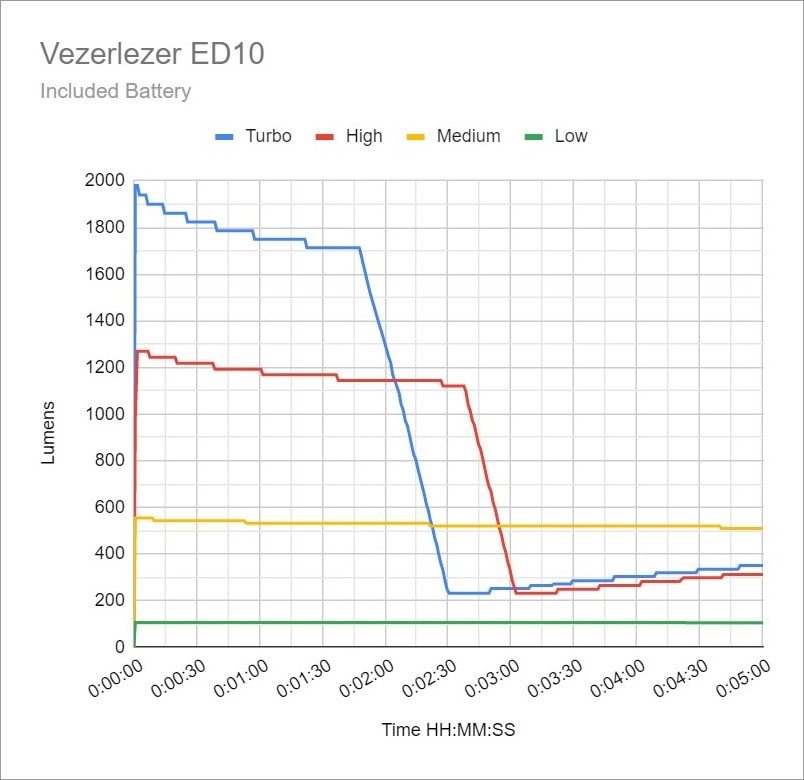
Turbo and High step down fairly quickly, lasting 2-3 minutes. Stable output is right around 400 lumens which is about right for a host this size with an efficient emitter like SST40 and an in-efficient FET-based driver. Turbo and High mode perform so similarly that I don’t see any benefit to using High over Turbo. They have a little trouble finding thermal equilibrium at first, but stabilize after about 30 minutes.
Medium drifts downward with cell voltage throughout its runtime, but it appears to be the sweet spot for getting as much brightness as possible without inducing thermal throttling.
Low mode is way flatter and way longer running than the three higher modes, because Low mode appears to be regulated by the 7135 part of the driver.
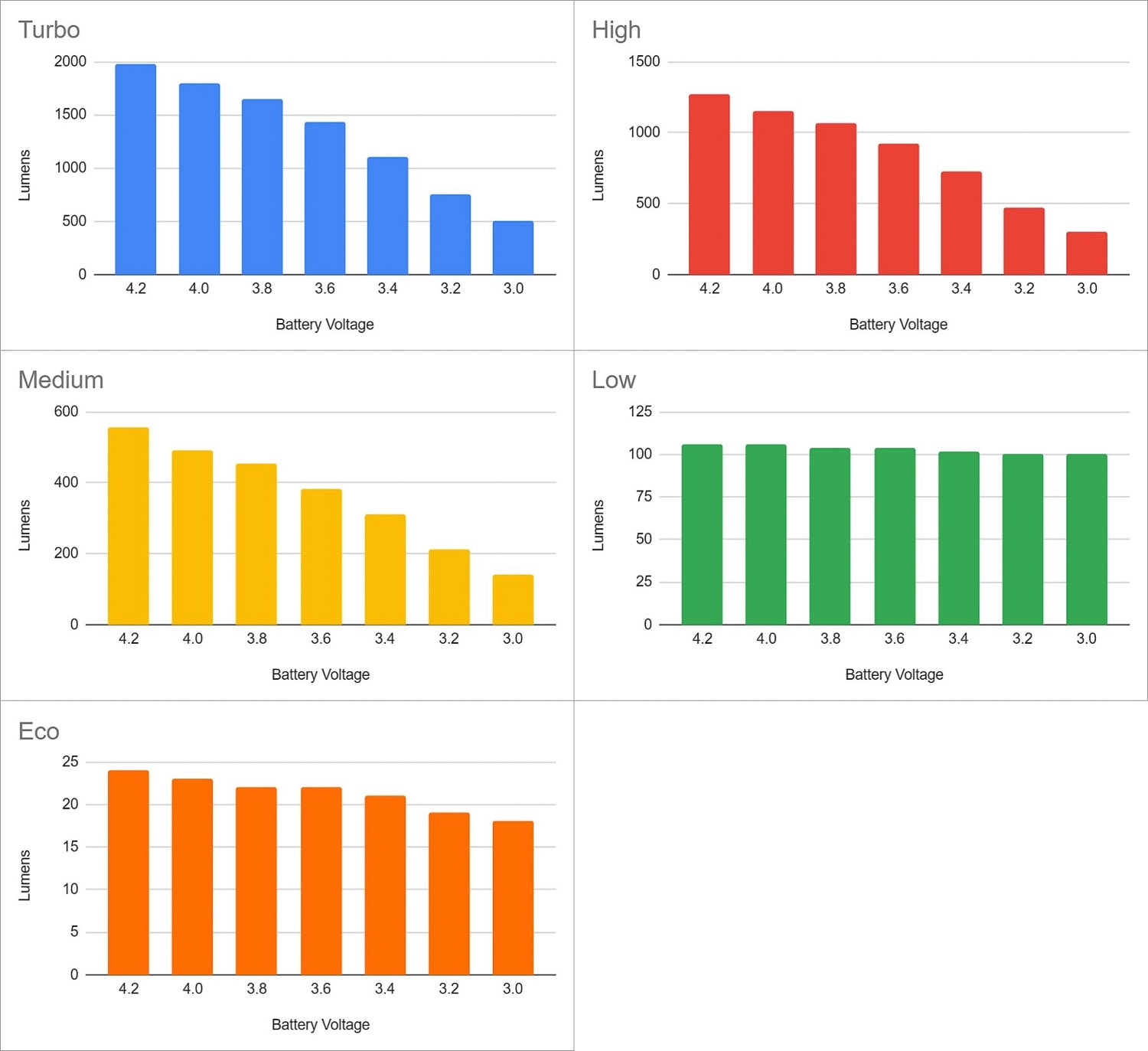
Throw numbers:
| Mode | Specs | Candela measured | Meters | Yards |
|---|---|---|---|---|
| Low | 1,444 cd | 1,285 cd | 72 m | 78 yd |
| Medium | 6,084 cd | 6,582 cd | 162 m | 177 yd |
| High | 15,006 cd | 14,752 cd | 243 m | 266 yd |
| Turbo | 23,256 cd | 22,096 cd | 297 m | 325 yd |
Beamshots
This is a great beam for general outdoor use. It’s got enough throw on Turbo to see where you want to see and enough spill to see your surroundings. The hotspot isn’t so tight that it’s problematic when used at short distances, and I didn’t find the spill lacking in brightness like I do on some further-throwing lights.
In the first set of outdoor beamshots, the trees where I’m aiming the hotspot are 175M away. In the second set, the park bench where I’m aiming the hotspot is 42M away.
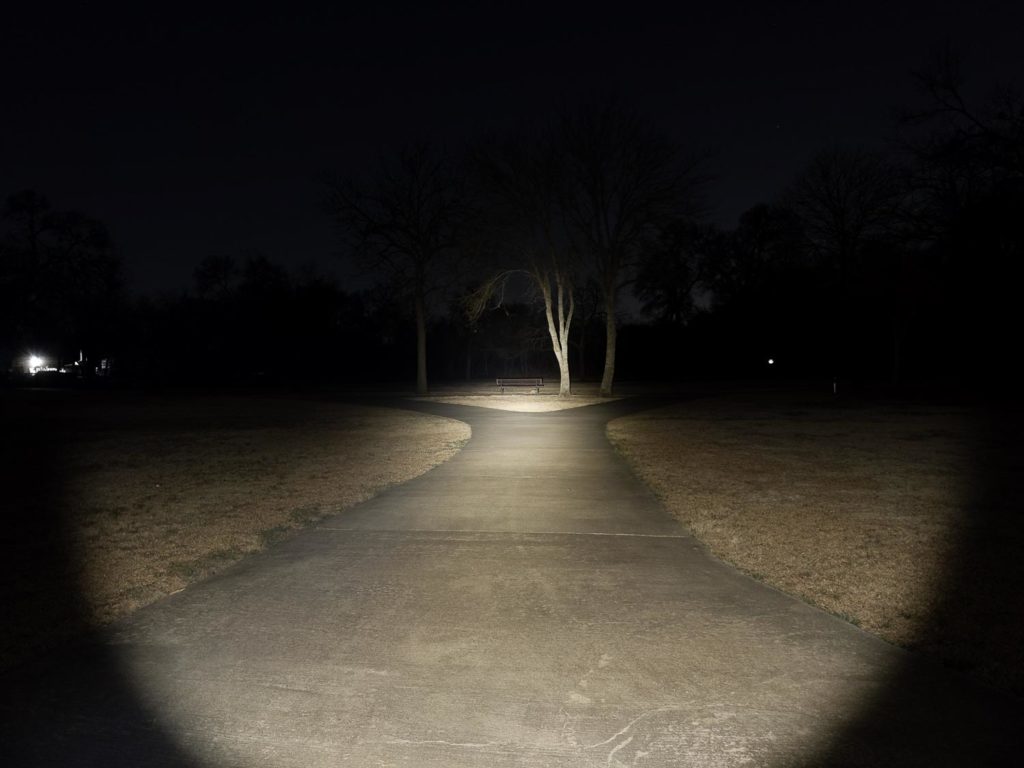
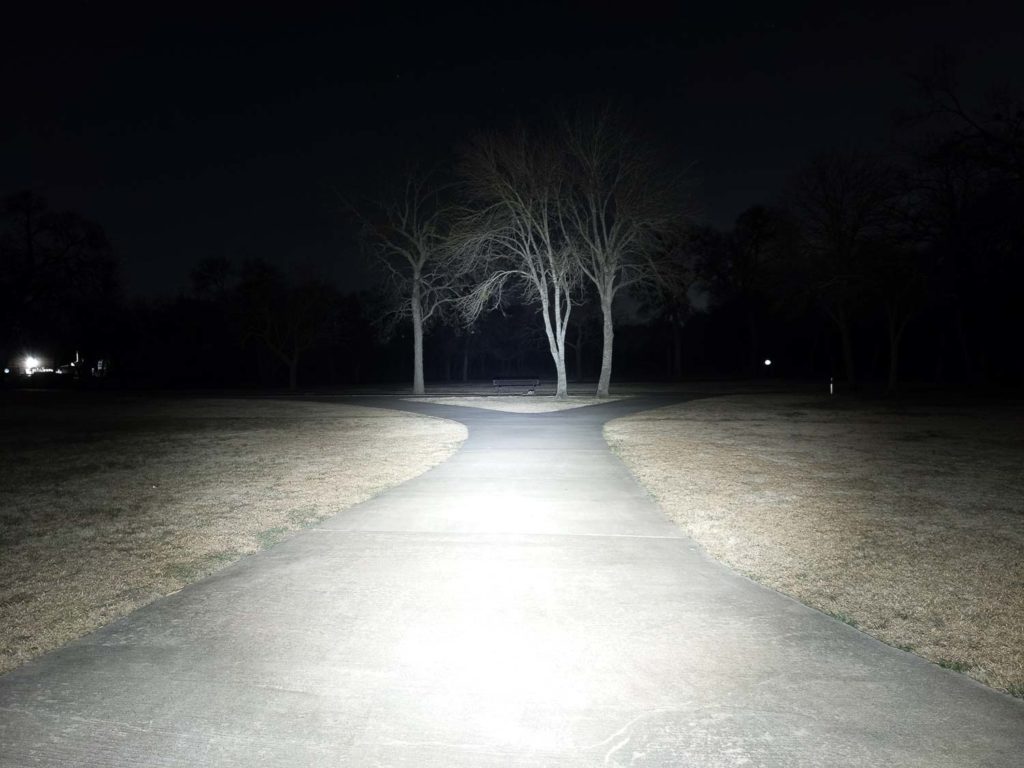

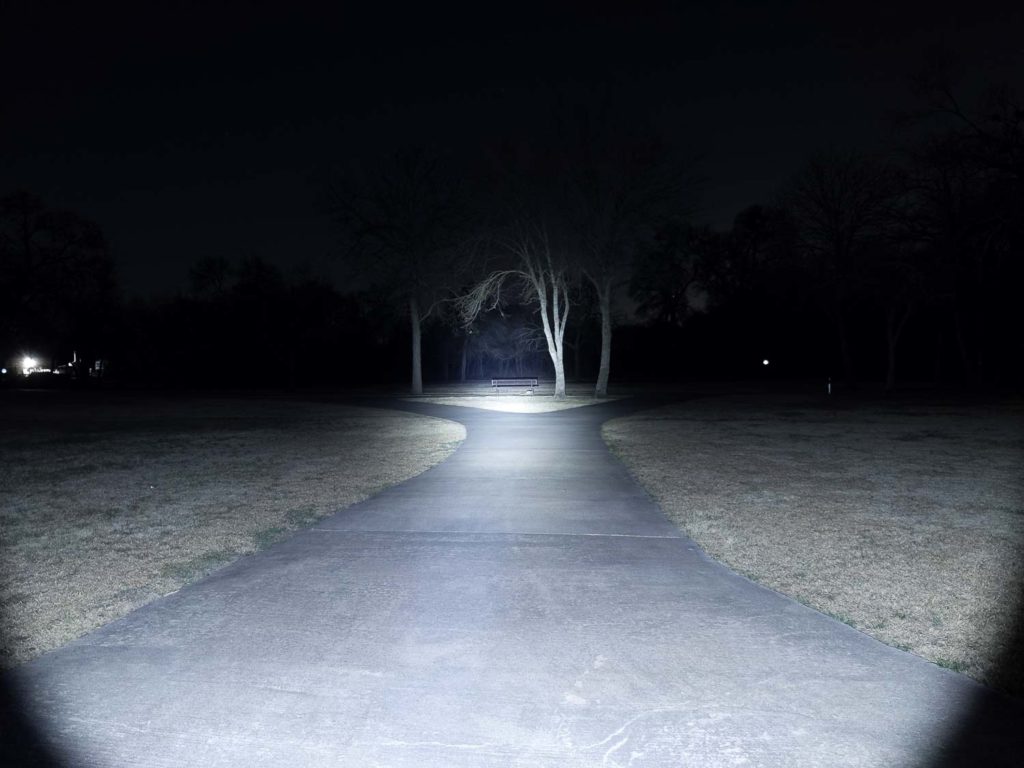
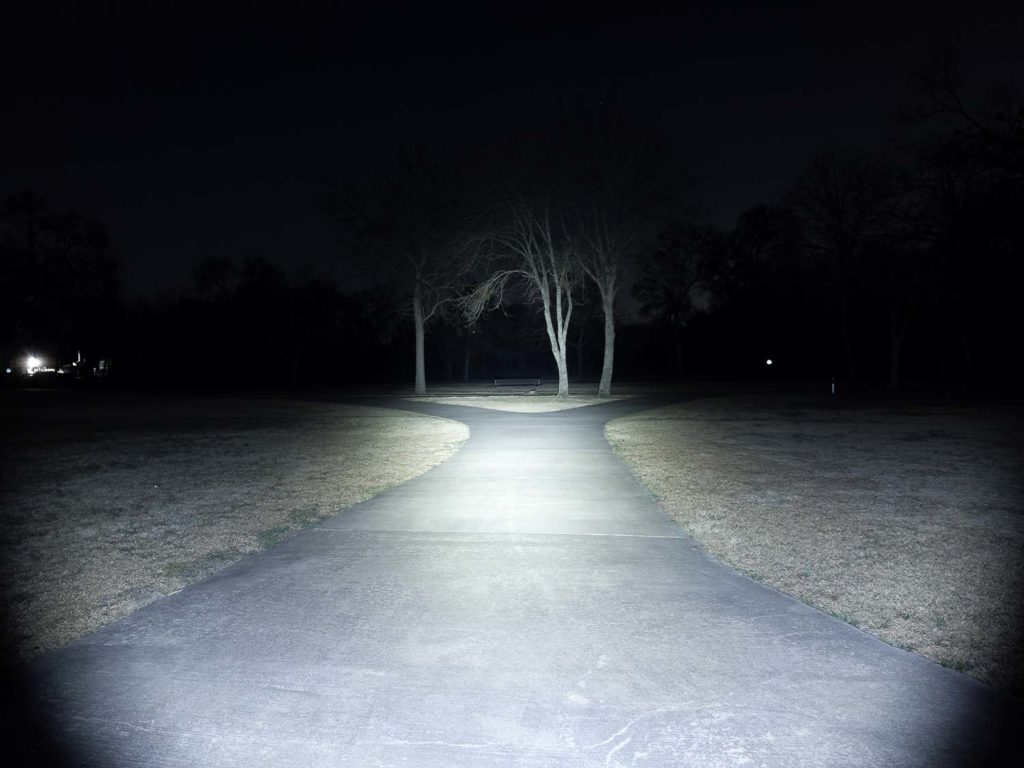
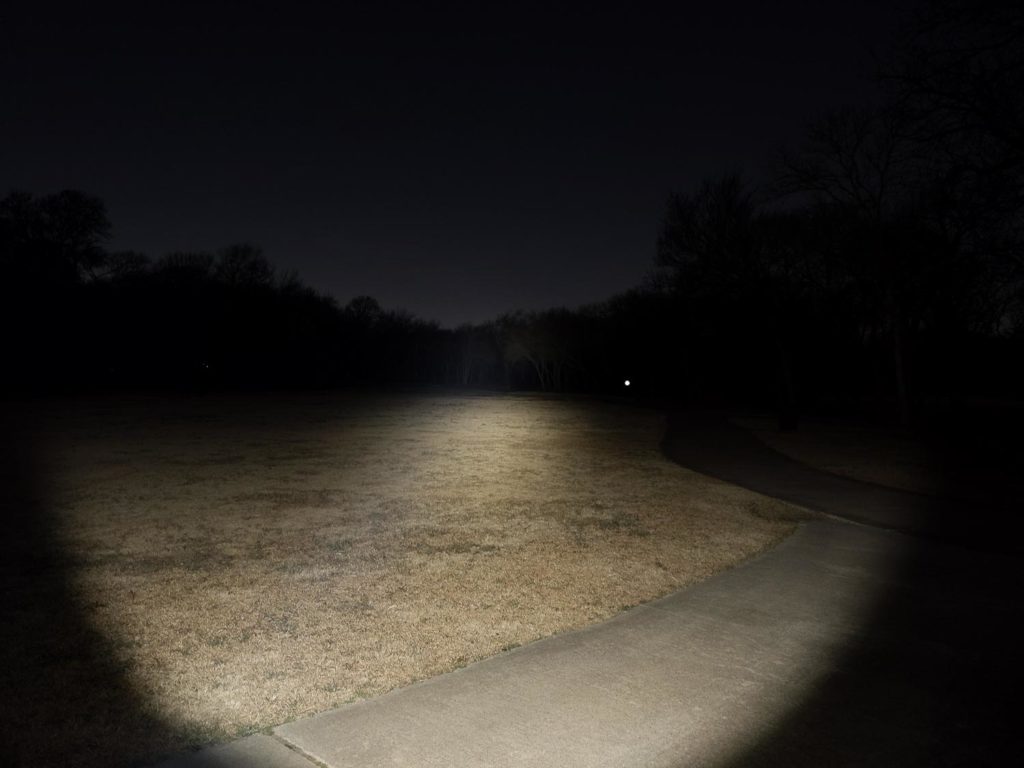
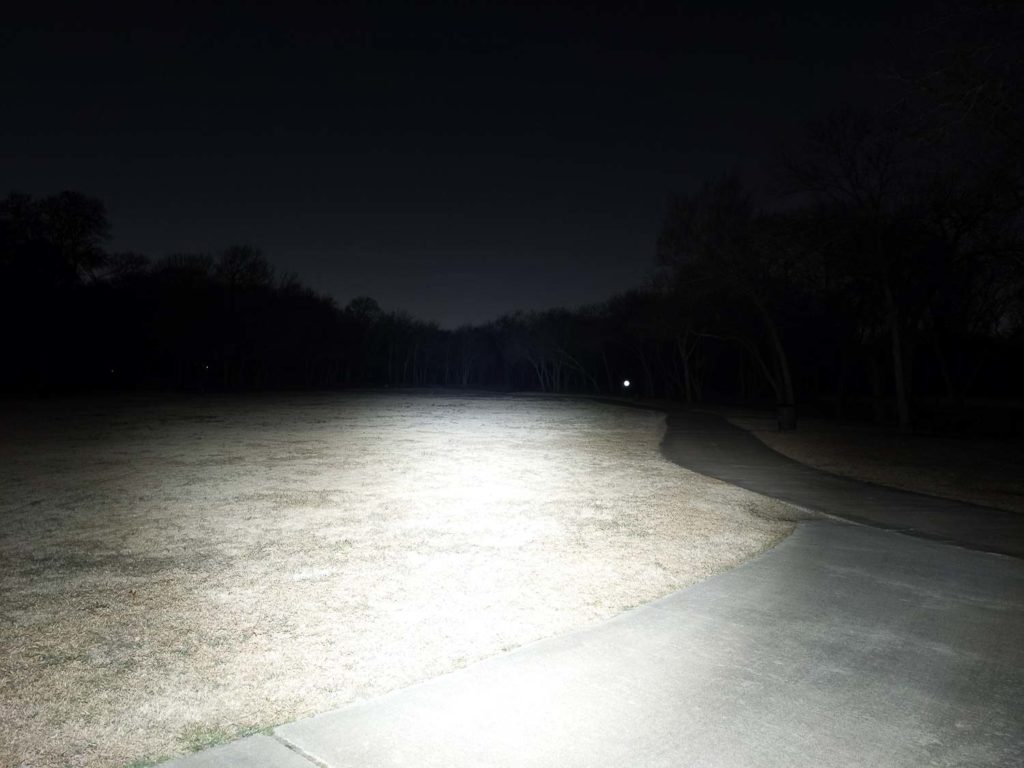
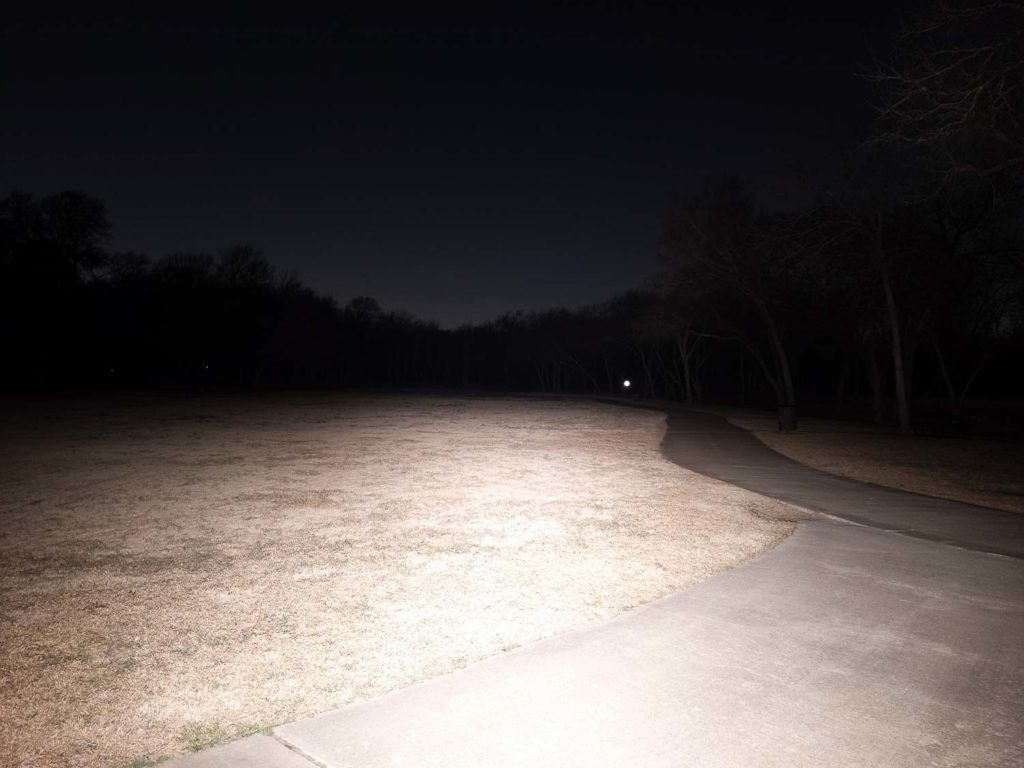
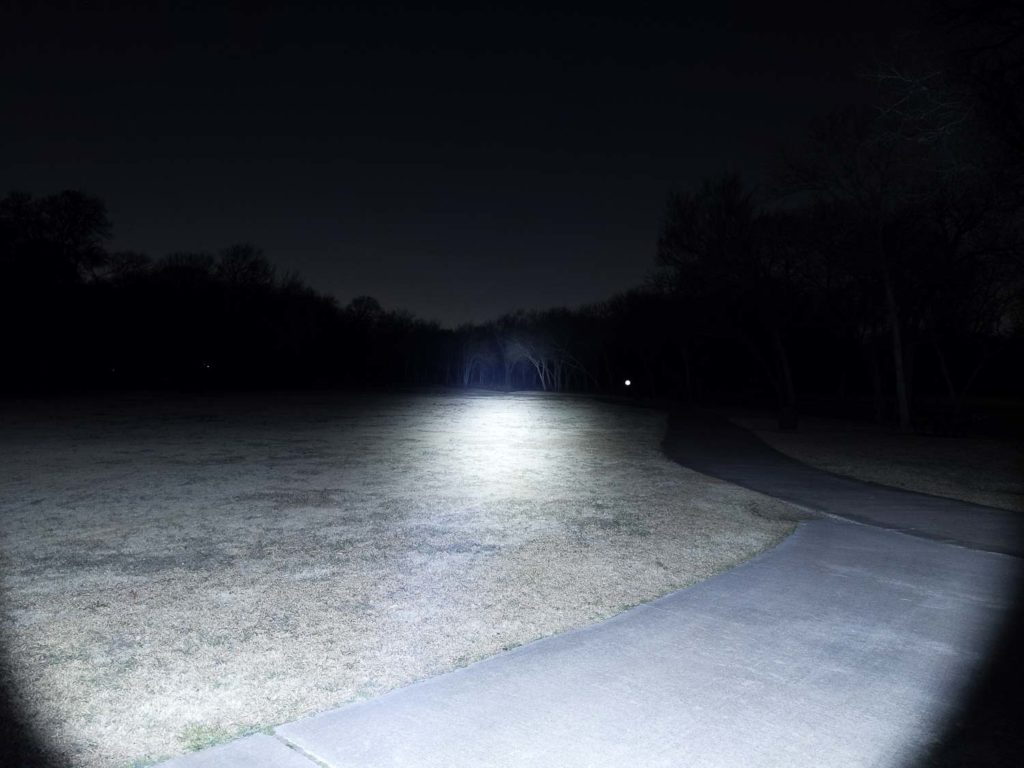

Disclaimer: This flashlight was sent to me for review at no cost by Vezerlezer. I have not been paid to review, nor have I been holding back on problems or defects.
Final Verdict
Pros
- Good build quality
- Proper USB-C implementation
- Battery & charging included
- Good user interface
- Small and carryable
Cons
- High parasitic drain
- No moonlight mode if using smooth ramping
- Weird regulation behavior
- A little slippery
Explanation on star ratings:
1: Avoid: my phone flashlight would be a better choice – 2: Poor: significant defect or issues; almost unusable – 3: Average: some defects or issues; but still usable 4: Good: recommended (minor issues) – 5: Great: highly recommended
Author: Angus
3.5 stars: ★★★⋆
ED10 is Vezerlezer’s first light, and it’s a great start with just a few quirks they need to work out. They got all the basic stuff right, unlike most brand-new manufacturers. I do think the price is too high though at about $50. It really should be around $30 if Vezerlezer wants to compete with similar lights from Wurkkos or Sofirn. I’m excited to see what Vezerlezer releases in the future!
Vezerlezer ED10 discount code
Get 30% off, by using the following discount code: GEAUSTSJ
1lumen selects and reviews products personally. We may earn affiliate commissions through our links, which help support our testing.